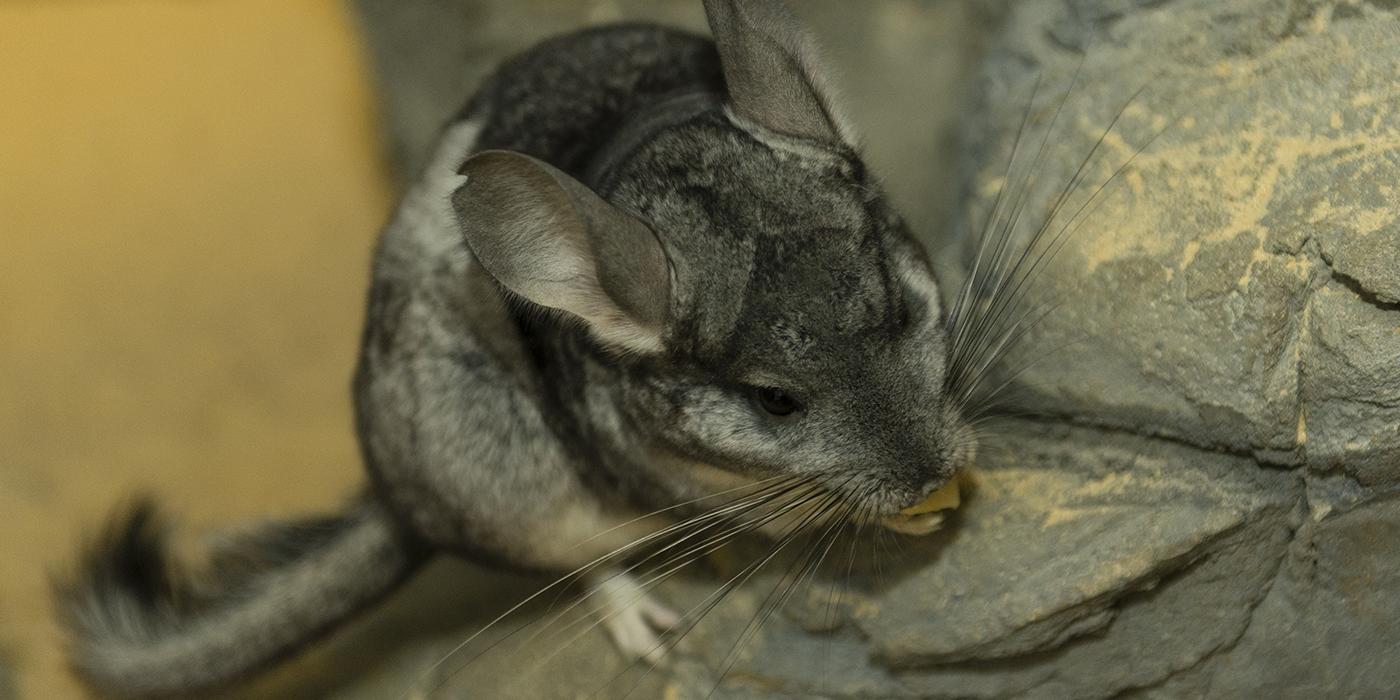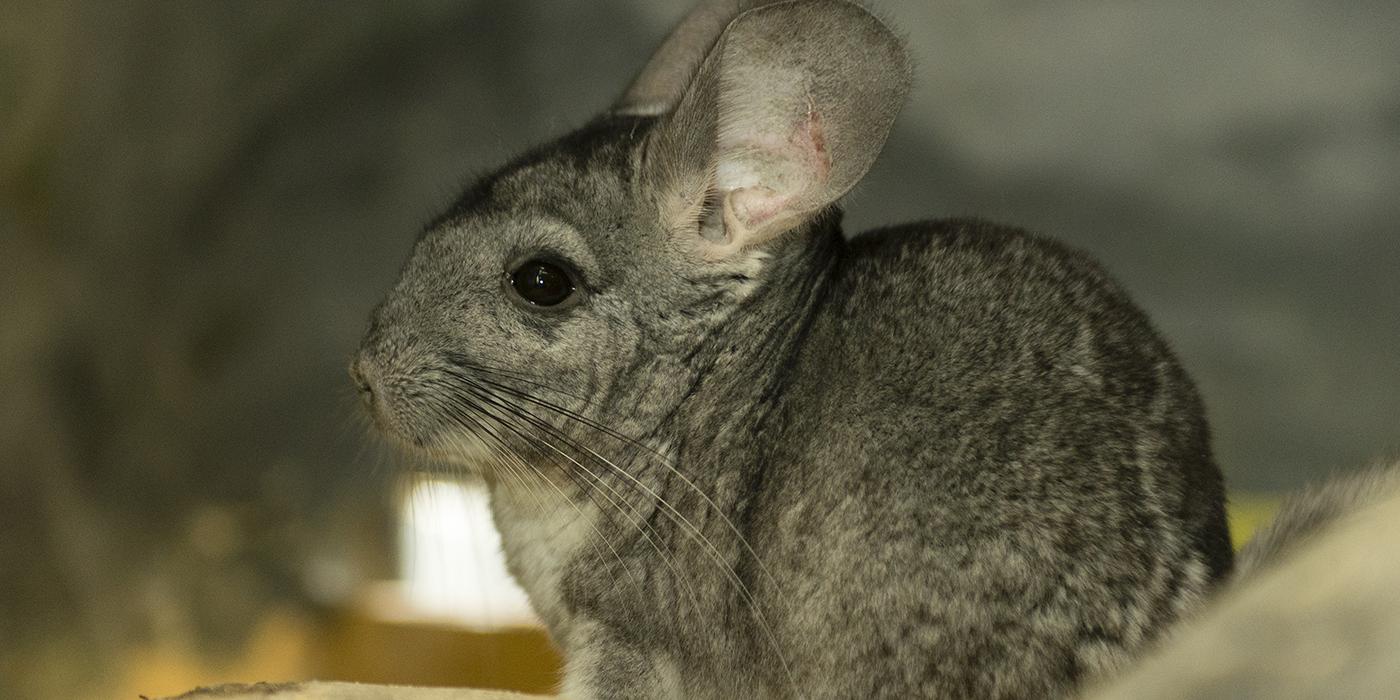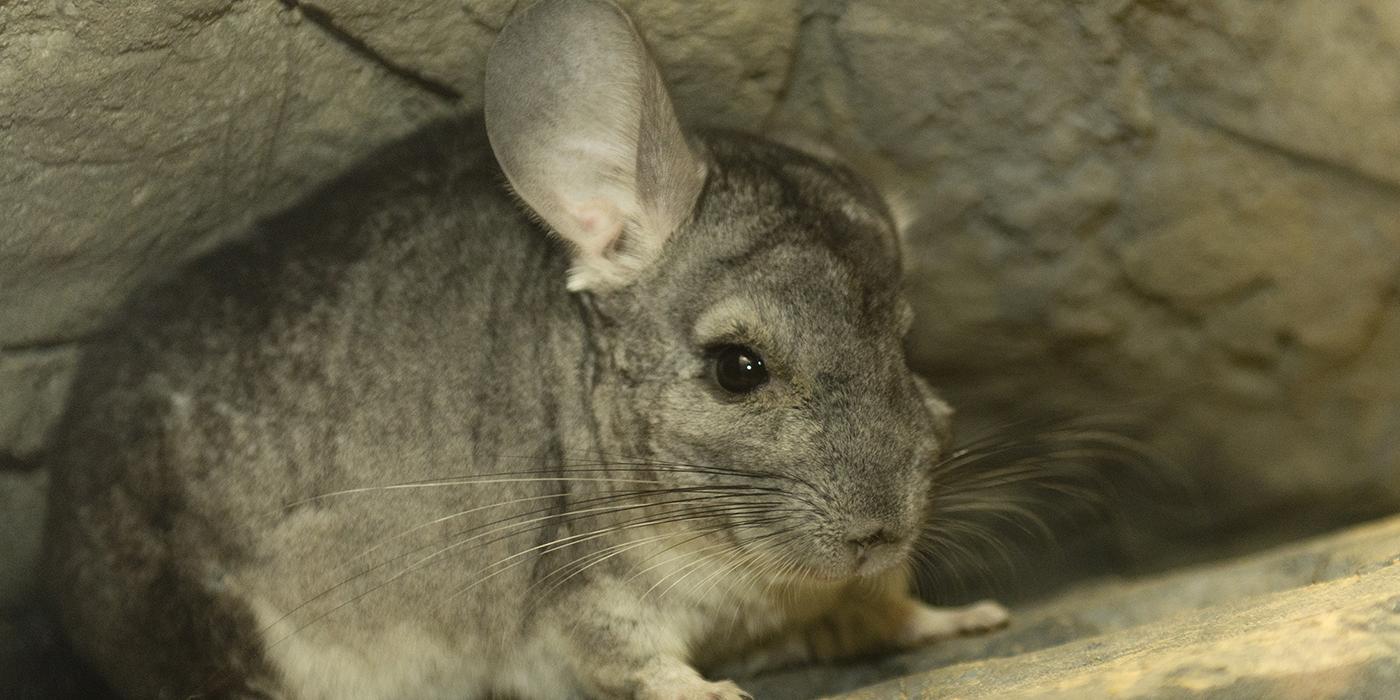The endangered, long-tailed chinchilla is a medium-sized rodent with famously thick, beautiful fur. It is a social, matriarchal animal native to the Andes mountain range.
Physical Description
Their fur is usually pearl, bluish or brownish gray except on their stomachs where the fur is yellowish-white. Their coat is very soft and dense, and each hair usually has a black tip. This thick fur keeps them warm in the high elevations of the Andes.
They have broad heads, large external ears, large black eyes with a vertical split pupil, and vestigial cheek pouches.
Like all chinchillas, the soles of their feet aren't furry and they have fleshy foot pads called pallipes. Their forefeet have four easily maneuverable toes, which they use for grasping. Both sets of feet have weak claws. Their well-developed hind limbs are longer than their forelimbs. Members of this family often jump bipedally, but mostly they move on all four limbs.
Size
Chinchillas have 9 to 14 inch (23 to 36 centimeter) long bodies and 3 to 6 inch (7 to 15 centimeter) bushy tails. Females weigh up to 1.76 pounds (800 grams) while males only weigh about 1 pound (0.5 kilogram).
Native Habitat
This species of chinchilla is only found in the Andes Mountains of northern Chile. They live in rocky, mountainous areas from 9,800 to 16,400 feet (3,000 to 5,000 meters) in elevation and den in crevices and holes.
Lifespan
In the wild chinchillas live about 10 years, but they can live over 20 years in human care.
Food/Eating Habits
Chinchillas are mostly herbivores. They eat a wide variety of vegetable matter including seeds, grass, leaves, roots, lichen and mosses, as well as insects and eggs when they can get them.
At the Smithsonian's National Zoo, the chinchillas receive specially made chinchilla pellets, alfalfa and raisins.
Sleep Habits
Chinchillas are nocturnal, or active at night.
Social Structure
Chinchillas live in colonies consisting of a few individuals to hundreds. Female chinchillas, the dominant sex, are very aggressive toward one another and toward males during estrus. Despite this aggressiveness, serious fights rarely happen. Chinchillas express threats through growling, chattering their teeth and urinating.
Reproduction and Development
Chinchillas breed during the winter months wherever they live. Female chinchillas are mostly monogamous, and have two litters each year. After a four-month gestation period they give birth to litters of one to six young. Most litters include two or three babies, which are born well developed. They nurse until they are 6 to 8 weeks old.
Conservation Efforts
Chinchillas have been hunted mercilessly for their dense, soft fur, which has been prized in fashion. Well over 100 chinchilla pelts are needed for a single fur coat. They have been hunted for human apparel since the early 1900s. Around 1900, Chile exported about 500,000 chinchilla skins each year. Chinchilla pelt is considered by some to be the most valuable pelt in the world
Protective legislation has been in place since 1929, but was not properly enforced until 1983. Populations continue to decline (over 90 percent in the past 15 years). Although they are protected in the wild they continue to be hunted for their fur in some remote areas. They are bred commercially, but efforts to reintroduce them into the wild have not been successful. Chinchillas are also plagued by extreme habitat loss and habitat quality reduction.
Help this Species
- Be a smart consumer! Avoid animal-skin products, even those marked “faux,” to ensure you’re not contributing to the illegal hunting of this species.
- Are you a student? Did you love what you learned about this animal? Make it the topic of your next school project, or start a conservation club at your school. You'll learn even more and share the importance of saving species with classmates and teachers, too.
- Less is more. Cut down on the demand for resources by consuming less. Buy only what you need, and look for pre-owned or repurposed items before purchasing something brand new.
Animal News

Leaf-tailed Gecko Treated for Skin Cancer With Chemotherapy





